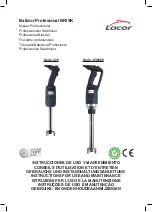
3 stages of baby food.
Stage 1
Perfect purées: 6-8 months
Stage 1 introduces your baby to
a series of smooth, thin purées
to get developing systems used
to solid food. Most babies begin
this stage between 6 and 8
months of age, but they can be
ready as early as 4 months or
as late as 10 months.
As your baby grows and
develops stronger swallowing
skills, he or she will become
hungrier and more interested
in food. At this stage, your baby
may be willing to try just about
anything, so get creative!
Remember to always follow your
baby’s lead when introducing new
foods. Be gentle and do not force
your child to eat anything he or
she doesn’t want. If it doesn’t go
well, simply take a break and try
again in a week. Self-feeding is
a big part of Stage 2, so this is
where you can begin to offer age-
appropriate finger foods, let your
baby hold the spoon, and serve
thicker foods in a bowl.
Stage 3
Mini-meals: 12+ months
Stage 2
Tasty textures: 9-12 months
Stage 3 expands your baby’s list
of developmentally appropriate
foods. To avoid picky eating
habits, keep offering a wide
variety of textures and flavors.
If a certain food is rejected or
ignored, do not stop serving
it to your child. Consistently
including a new type of food
on your child’s plate will make
it more familiar and reduce the
anxiety surrounding feeding
time. It takes an average of
5-10 repeated servings for most
infants to start liking a new food,
so with repetition and patience,
your child is likely to expand his
or her palate.
Because every baby develops differently, it is important to talk to your pediatrician
first, so you can make informed decisions about what foods are appropriate for
your baby at their stage of development. If at any point you become concerned with
your baby’s eating habits, contact your pediatrician for advice.
If you choose to introduce solids
prior to 6 months of age, we
suggest that you consult with
your pediatrician and ensure
your baby shows the signs
detailed below.
Signs your baby may be
ready for Stage 1 include:
•
Baby weighs at least 13
pounds and/or has doubled
his or her birth weight.
•
Baby can sit upright with
support and has the ability
to “lean in” for more food.
•
Baby has good head control.
•
Baby can turn away to
signify mealtime is over.
•
Baby does not push food
out with his or her tongue
(extrusion reflex), and baby
can move food to the back
of the mouth and swallow.
[1, 2, 3, 4]
18
19
Summary of Contents for 01412
Page 1: ...User guide ...

































